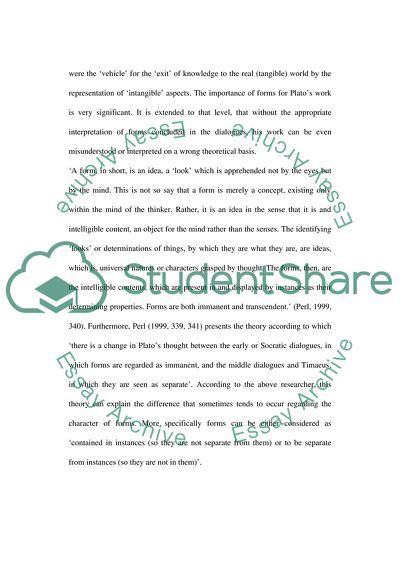Cite this document
(Platos Theory of Forms Assignment Example | Topics and Well Written Essays - 3000 words, n.d.)
Platos Theory of Forms Assignment Example | Topics and Well Written Essays - 3000 words. https://studentshare.org/philosophy/1702894-does-platos-theory-of-forms-solve-the-problems-it-sets-out-to-address-with-regards-to-knowledge
Platos Theory of Forms Assignment Example | Topics and Well Written Essays - 3000 words. https://studentshare.org/philosophy/1702894-does-platos-theory-of-forms-solve-the-problems-it-sets-out-to-address-with-regards-to-knowledge
(Platos Theory of Forms Assignment Example | Topics and Well Written Essays - 3000 Words)
Platos Theory of Forms Assignment Example | Topics and Well Written Essays - 3000 Words. https://studentshare.org/philosophy/1702894-does-platos-theory-of-forms-solve-the-problems-it-sets-out-to-address-with-regards-to-knowledge.
Platos Theory of Forms Assignment Example | Topics and Well Written Essays - 3000 Words. https://studentshare.org/philosophy/1702894-does-platos-theory-of-forms-solve-the-problems-it-sets-out-to-address-with-regards-to-knowledge.
“Platos Theory of Forms Assignment Example | Topics and Well Written Essays - 3000 Words”. https://studentshare.org/philosophy/1702894-does-platos-theory-of-forms-solve-the-problems-it-sets-out-to-address-with-regards-to-knowledge.


